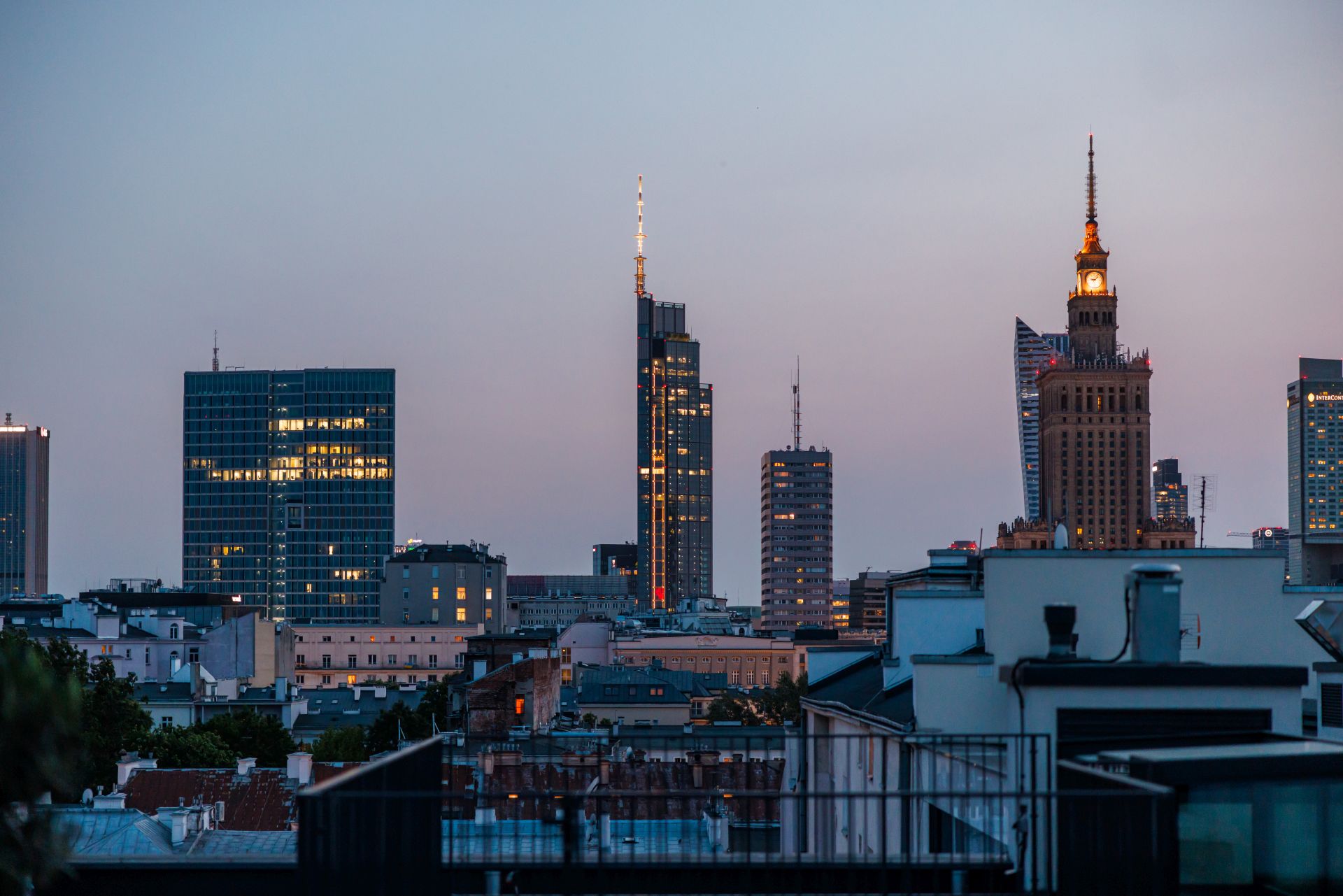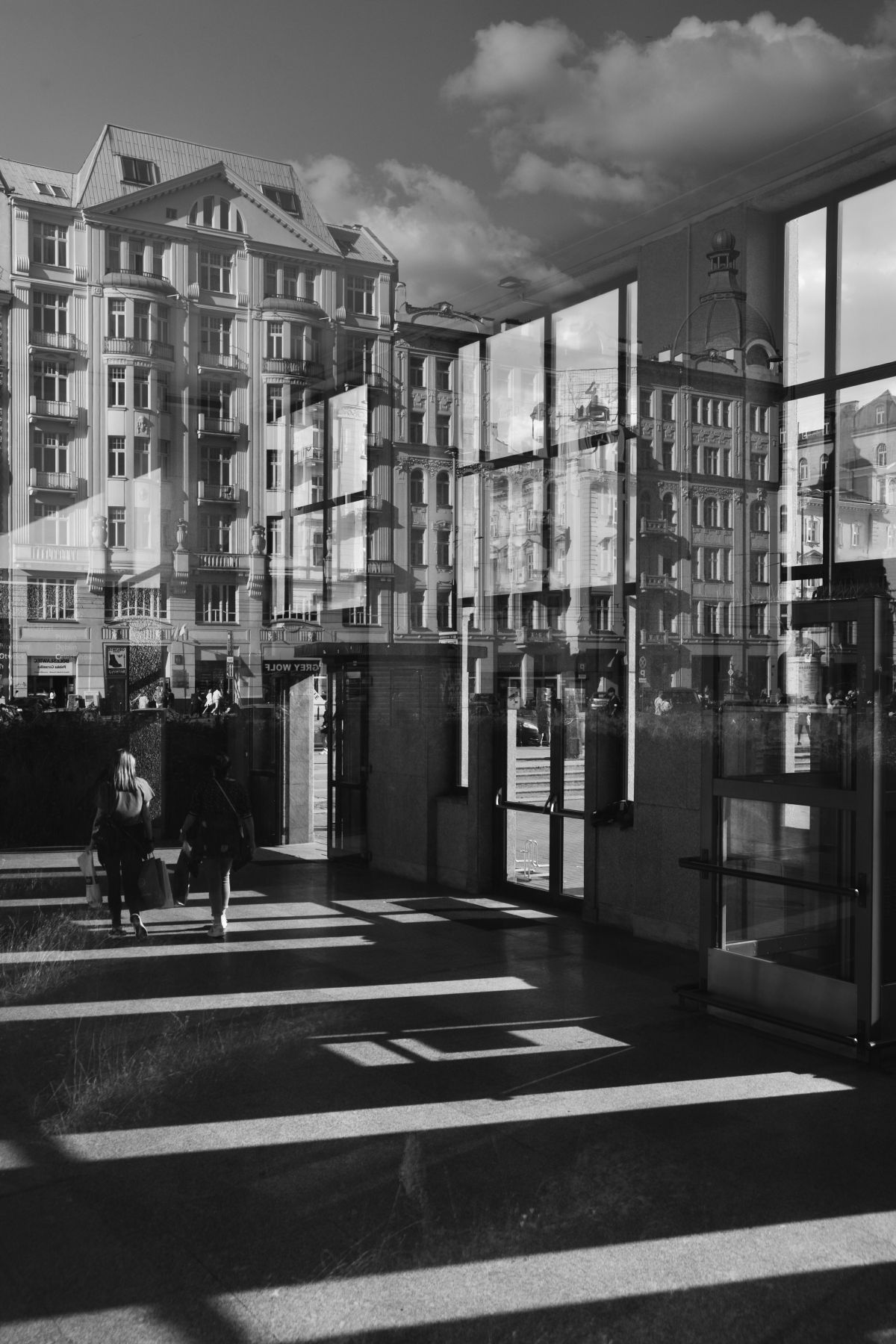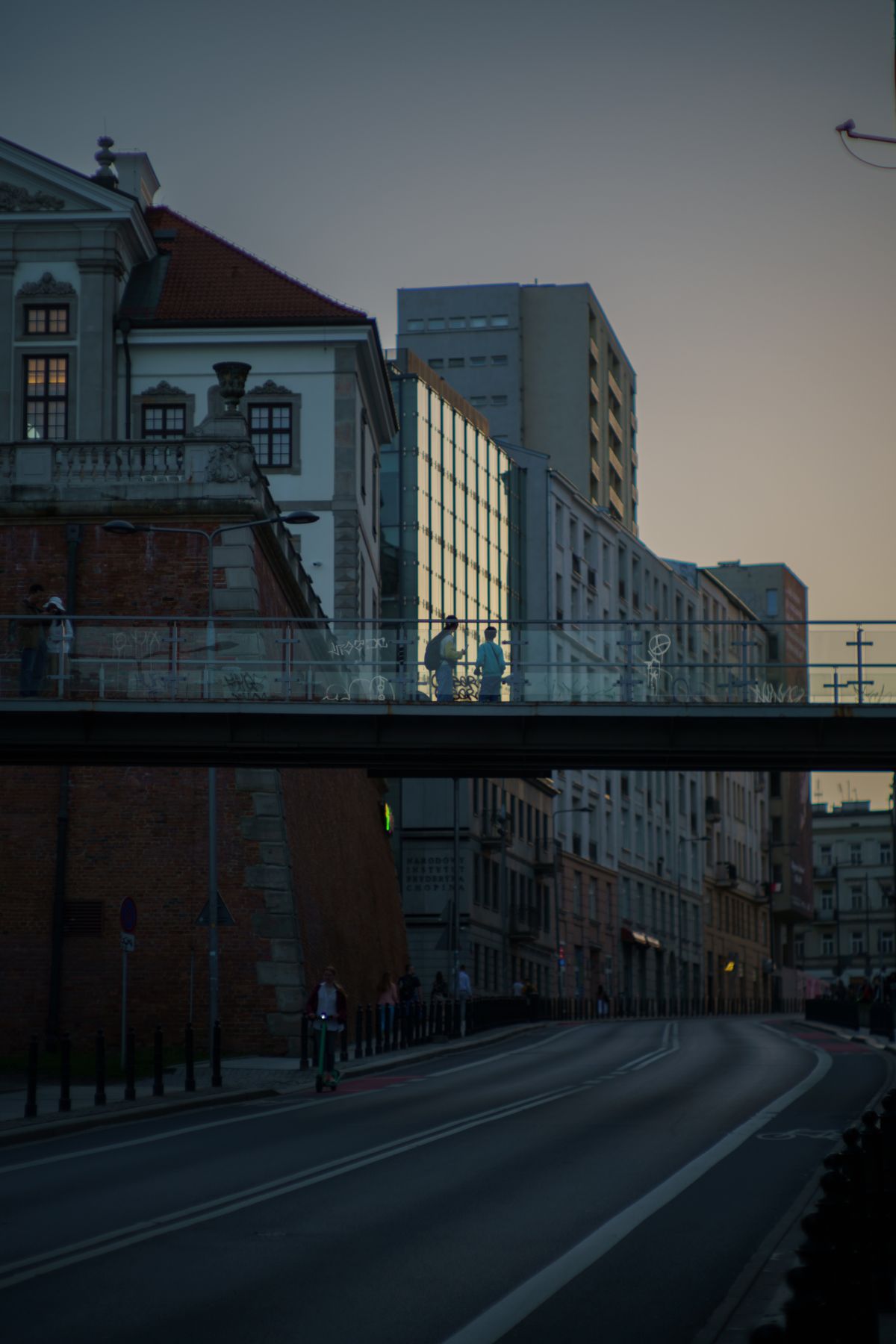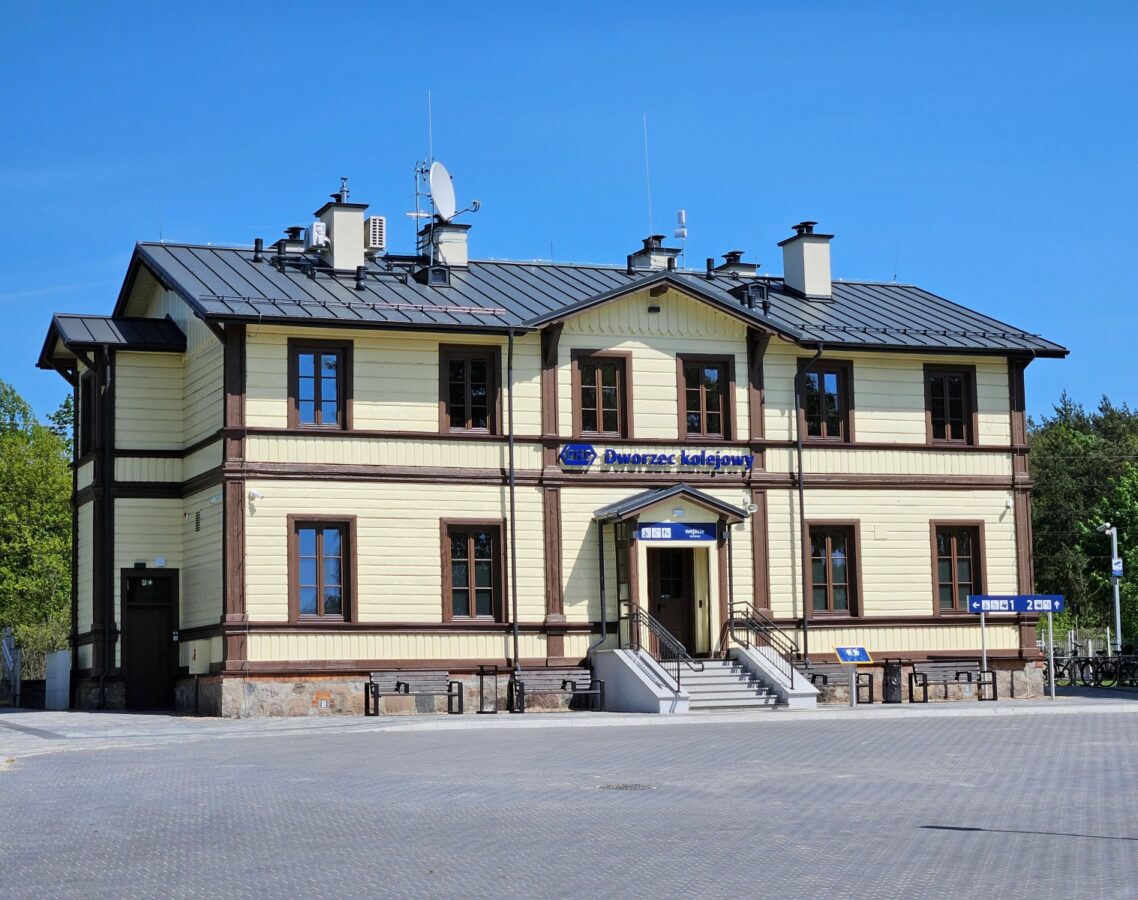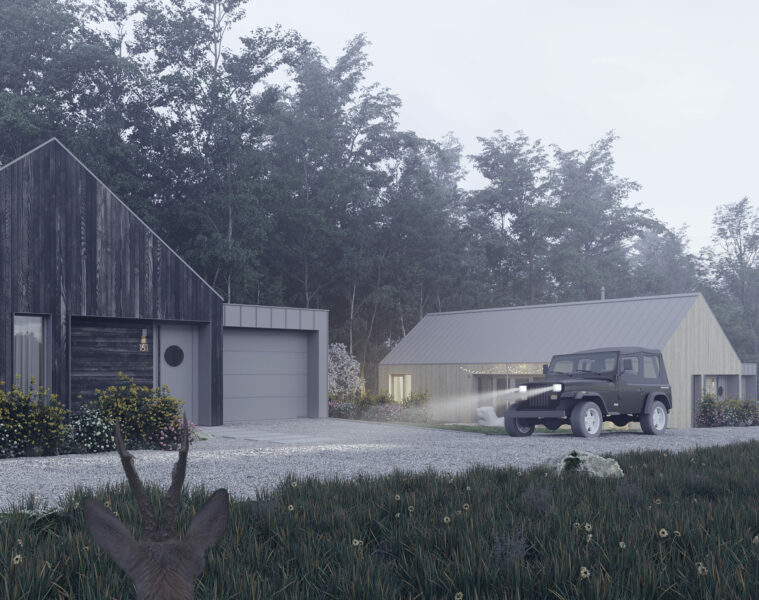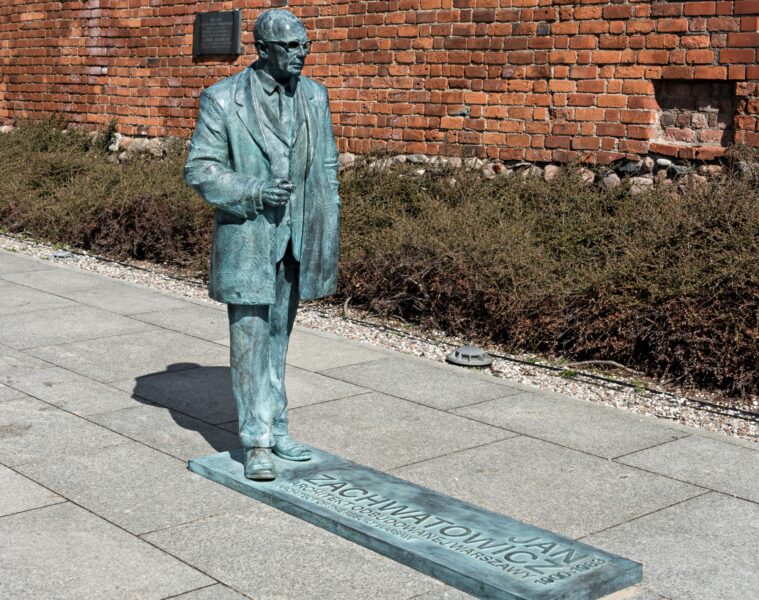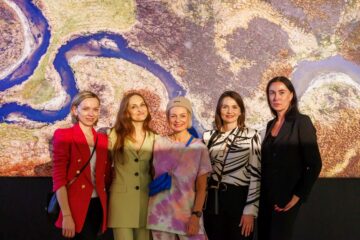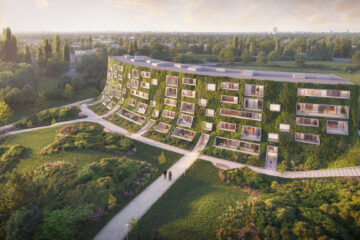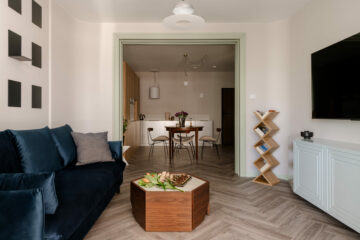The centres of large cities are attractive places not only to work, but also to live. Free access to the city’s infrastructure ensures comfortable day-to-day functioning there. Unfortunately, the dense development – typical of the city centre – limits the possibility of building new premises, both commercial and residential. According to architects and urban planners, revitalisations of historic townhouses and superstructures are an effective solution to this problem. However, one still gets the impression that the potential of existing buildings remains untapped.
The inner city attracts like a magnet. Young people are tempted by the proximity of urban attractions. Trendy restaurants, cinemas and popular museums are within easy reach. Meeting friends then does not require a time-consuming commute, and a lunch outing does not turn into a breakneck expedition. Older residents, on the other hand, appreciate the proximity of the city’s infrastructure and the multitude of green spaces they can use to relax. But that is not all. For a long time, the presence in the centre has also been accompanied by prestige, which is also appreciated by entrepreneurs. The business environment in the form of nearby government offices or financial institutions makes it easier to do business on a daily basis. All this contributes to the perception of the city centre as an attractive and desirable place, regardless of age, social status or occupation.
The attractive ‘face’ of the inner city
In 2017, the Statistical Office in Warsaw published a ranking assessing the attractiveness of the capital’s various districts. How did Śródmieście fare in it? As was to be expected, it came top, placing second, just behind Wilanów. Among other things, it was praised for having the best accessibility to shops and clinics in the capital, for its friendliness to businesses and for the large number of recreational and leisure areas. All this builds a sense of comfortable living, which for many people is a fundamental value when looking for a place to live.
In any case, the advantages of the city centre from the perspective of everyday life are confirmed by its residents themselves.
“What Iappreciate about Śródmieście is the location of my flat close to important points of the city and the possibility of getting around on foot. I rely on mobility and easy access to the various places and attractions that this part of the capital offers. By this I mean above all access to cultural institutions, as well as a substitute for urban planning, which is lacking in most of the city,” emphasises Dr Joanna Jurga, lecturer, researcher, neuroarchitect and owner of a flat in a tenement in the centre of Warsaw.
High population density, but…
The attractiveness of Warsaw’s City Centre means that its population density remains high. This is in fact confirmed by statistics. Reaching for Statistical Review No. 3/2023, published by the Statistical Office in Warsaw, one can read that the population density of Śródmieście in 2023 (as at 30 June) fluctuated between 5433 and 6876 people per 1 km2. This is a lot, or even a lot, considering that the population rate for the entire city at that time was 3599 people per 1 km2.
Unfortunately, this is compounded by a negative trend – in June 2023, Śródmieście saw the highest population decline among Warsaw’s districts – as much as 1.8%. Why is this happening? Why is a neighbourhood widely regarded as attractive starting to slowly empty? One answer provides… demographics. Last year, Śródmieście was at the forefront of statistics on deaths, but also in terms of negative natural growth, which undoubtedly points to the progressive ageing of the district’s population.
However, this is not the only reason for the emptiness of Śródmieście and the choice of other Warsaw districts as a place to live. Finances are equally important. It is no secret that the centre of the capital has for years been the undisputed leader in the listings of prices per square metre of flats on offer. Unfortunately, prices in this location are rising year on year, scaring off potential buyers. According to SonarHome.pl, a company specialising in property valuations, in March 2024, the price of 1 m2 here was PLN 20,950, which is PLN 5310 higher than the average price in the entire city. This trend is not halted by the limited number of available flats.
What is behind these figures? First and foremost – people, with their life choices, dilemmas and plans for the future. People who are looking for their place in the city and in the City Centre…. are starting not to find it.
More residents, fewer… premises
The above-average population density of the city centre is a fact of life. Unfortunately, it has led to a situation where the gap between the availability of housing and the needs of residents is becoming increasingly apparent. A phenomenon that was initially overlooked is now becoming a problem. How do we reconcile the growing need for housing with the limited availability of housing?
Build? Unfortunately, the low availability of investment land in the centre severely limits the possibility of new developments. In 2015 – according to the “Ranking of Warsaw districts in terms of attractiveness of living conditions” – more than 93% of the area of Śródmieście was occupied by built-up and urbanised land.
Architects and urban planners have been looking for an effective solution for years, especially as the problem does not only affect Warsaw, but also other European cities. In their opinion, it may be a good idea to densify existing buildings. Superstructures and revitalisations of buildings are able to provide the missing floor space in terms of both residential and commercial premises. What is more, they will not only solve housing problems, but also introduce more spatial order by integrating old and new architecture.
“Building in city centres, as opposed to sprawling suburbs, makes use of existing infrastructure and, moreover, shapes the urban fabric based on a universal canon of streets, squares and building quarters. Supplementing the frontages with new plots or superstructures of existing townhouses is a great trend that offers great opportunities. Good space is conducive to living,” assesses Tomasz Konior, a well-known architect and urban planner.
By the way, it is worth adding that the appearance of new premises in the space of the city centre as a result of revitalisation processes or superstructures should also have an impact on stopping the ‘desertification’ of the city centre due to high housing prices. The increased supply of flats will create conditions for greater competition, which in turn will slow down the rate of price increases.
Untapped potential of historic townhouses
A large proportion of the existing buildings in the city centre are pre-war. There is no shortage of listed buildings among them, important from the perspective of the city’s history and forming its material legacy. Unfortunately, the condition of many of them is deplorable.
There are various obstacles to renovation. Sometimes these are administrative difficulties (particularly onerous in the case of buildings entered in the register of historical monuments), sometimes the renovation work is prevented by claims of former, expropriated owners. Mention should also be made of costs, which, although mentioned at the end, are sometimes decisive. Neither local authorities nor housing communities can often afford to carry out costly renovation work.
Fortunately, the potential hidden in historic buildings is increasingly being recognised by municipal authorities. One of the strategic objectives, enshrined in the “Micro-Programme for Revitalisation of the Śródmieście District of the City of Warsaw”, is: “Saving and managing historic buildings”. Within the framework of this programme, several significant renovations of historic buildings located in Śródmieście were carried out in the 21st century on the initiative of the Warsaw local government. These included the so-called ‘artistic tenement’ at 11 Foksal Street, tenements at 6/8 and 6/8A Brzozowa Street and a tenement at 10 Krakowskie Przedmieście Street. Significantly, in addition to the City of Warsaw, there were also external beneficiaries. For example, the initiator of the revitalisation of the tenement house “Dom Gaya” at 28/30 Bednarska Street was Caritas Archidiecezji Warszawskiej.
Architects, urban planners and conservators emphasise the positive impact of revitalisation processes on urban space, despite the awareness that the costs of renovating a historic tenement house are higher than constructing a new building in this place. Nevertheless, the overriding value in this case is to save the unique historical heritage.
As Dr Joanna Jurga notes: “It is not only places to live, but above all surviving testimonies of history that deserve our attention and care. I live in a remarkable tenement house that has survived both wars. It is from the late 19th century, so it took me three months just to restore the floor, because the original one was hidden under panels. I also took care of the historic woodwork and stucco. After all, these are testimonies to history that can be incorporated into even very modern interiors. Unfortunately, respect for tenement dwellings is often overshadowed by contemporary trends. When I see old parquet floors being ripped up all too often, hidden under layers of modernity, I can’t help feeling that we are losing something extremely valuable. Such dwellings are not just a collection of old walls or outdated installations. They are archives that hold the history and memories of more than one generation.”
Revitalisation – an opportunity for the development of modern cities
Architects and urban planners emphasise the need for sustainable urban development to reconcile spatial order with the social needs of the inhabitants. They call for a reduction in suburbanisation – the migration of people from city centres to their periphery – and for opposition to the ‘urban desertification’ of these areas, i.e. the progressive ageing of the population and a deterioration in their quality of life. These processes – exacerbated by the poor technical condition of buildings and years of neglect – also affect Warsaw’s inner city. Revitalisation is considered by specialists to be one of the most effective ways of solving contemporary urban problems.
“I support the direction taken by cities such as Amsterdam and New York, where more and more vacant buildings in the centre, including industrial buildings, are being converted to residential use. In the inner city, in addition to making better use of existing residential buildings, it is also important to create new green spaces such as parks. By this I mean ‘pocket’ parks, which can even be created on individual plots of land. There is a lack of space in the city centre for large-scale parks, so every square centimetre of green space is worth its weight in gold. There is also a need for thoughtful structuring of the urban fabric, restoring the role of urban planners and making wise investments in the form of infill and superstructures that fit harmoniously into existing buildings. It is worth mentioning here the concern for the protection of places of particular importance, such as Jazdów” – assesses Dr Joanna Jurga.
As part of the aforementioned revitalisation programme for the city centre, several areas have already been identified as requiring action as soon as possible. Among them was the area adjacent to Nowy Świat Street – with streets such as Foksal, Chmielna, Kopernika, Ordynacka, Okólnik and Gałczyńskiego. The programme’s authors drew attention in particular to the multitude of buildings of exceptional architectural value existing in this part of the city. At the same time, they suggested that renovation work should begin as soon as possible so that they do not soon become a building hazard.
Of course, revitalisations are a major challenge, both in terms of construction and architecture. But the revitalisation processes carried out in many Western European cities, such as Vienna or London, for example, show that it is possible to successfully combine modern designs with the historic urban fabric to create a new architectural quality. What is more, in practice, their effect goes far beyond saving the time-bitten ‘brick witnesses of the past’, bringing degraded parts of the city back to life.
“Fitting a new development into an old architectural fabric is always a major challenge. On the one hand, it requires a good knowledge of the context of the surroundings, and on the other, humility on the part of contemporary designers. It is important not to imitate historical buildings, because this – apart from the questionable quality of the architecture – can also be perceived as a kind of ‘falsification’ of the landscape. The right solution is always to follow the dimensions and general articulation of the surrounding buildings, but using a contemporary architectural language. Of course, there can also be completely individual projects, bearing the hallmarks of old architecture, but these require a great deal of skill, often courage and always lengthy discussions with conservationists, “ concludes Michał Krasucki, director of the Office of the Capital City Conservator of Monuments.
There are many buildings in the Śródmieście district in need of major renovation. The actions taken so far show that the local government has recognised the problem posed by tenements in need of rapid renovation, but also the potential inherent in them. Unfortunately, financial constraints and, in many cases, still unresolved property issues are seriously hampering the municipal authorities’ efforts. In this situation, it seems necessary to involve private investors more in the revitalisation process. It should be remembered that this is an investment in the future that shapes not only the physical space, but above all the image of Warsaw as a dynamic, modern metropolis, where progress can go hand in hand with the preservation of authenticity and identity.
Press material / OKK PR / www.okkpr.pl
Read also: Architecture in Poland | Warsaw | whiteMAD on Instagram | Metamorphosis | Renovation | Interviews | Urban Planning


